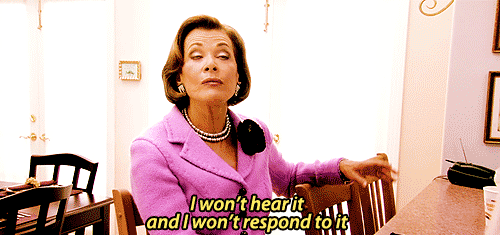Communicating in the Digital Age //
Tanner James
5/14/2015
Communication. You have heard it mentioned many times on this blog. My fellow students have expressed their amazement at the breakdown of communication when working with a group. Or the newly found importance of maintaining effective communication with a client. It undeniably influences every aspect of our lives...And now you will hear about it even more because the horse isn’t quite dead yet.
It is easy to see that the role of communication is changing rapidly in the twenty-first century. In the recent past communication was paper based or tethered to a copper telecom cable, the analog of the digital age. As a fan of Mad Men I find it comical that business once relied on landline phones or that people once used a strange device called a Rolodex to organize contacts. And don’t get me started on writing down everything in shorthand.

Like I said, methods of communication are changing rapidly in the twenty-first century, making the office pictured above an archaic remnant of the past. The secretary that once took notes in shorthand is now Siri in the palm of your hand. That Rolodex is now a digital file linked to all of your devices. And the telephone tied to a cord is now a 4.5 ounce wireless device with more computing power than the brightly colored iMac I used in elementary school. These new methods of communication have become so ingrained in society that they have rapidly spread their influence to our personal lives. Converting those who once didn’t understand technology to tech addicts.
I have seen this change in my own mother who in the past refused to text or get a facebook account. “I stare at a computer everyday for work, why would I get home and do the same thing on facebook??” Now when I visit home I can barely manage to get her away from her iPad to pay attention to me, as if I’m the adult and she’s my teenage daughter. I even get messages every week when I don’t answer a call saying “Where R U?” (she thinks she’s cool because she uses letters in place of words. Or maybe she thinks she still has a flip phone with actual buttons. I don’t know.) The technology addiction has even spread to a plethora of links that get posted to my wall on facebook. “Did you get that email I sent you on facebook?”
My own frustration aside, her reason for the sudden switch to technology: “It’s the only way I can get colleagues and employees to respond to me quickly.” While my mother works for a manufacturing conglomerate the same switch to technology holds true for architecture. Last year as a student at Kansas City Design Center I was lucky enough to work with Coen+Partners of Minneapolis on the envisioning of an improved Washington Square Park in Kansas City. This was done through weekly calls using video conferencing and screen sharing. Even with the constant plague of computer crashes and broken video cameras we experienced, it is amazing to think that as little as ten years ago this collaboration between an architecture firm and a group of students would have been seen as unfeasible. The influence that technology has had on communication goes beyond this. Working with clients, contractors, and fellow students this year I found that a phone call was often the best way to get ahold of someone. In the case of students a text message was an even better way to facilitate rapid communication. Why? Because wherever you are it can be answered. Out on a jog, sitting on your sofa, or even in a lecture a millennial will find some way to text you back out of compulsion. And don’t even try to ignore me. Emails can be ignored, phone calls can be missed but a text message sent to a smart phone cannot be believably unseen.

In fact the only reason I still use email is to maintain a record of correspondence. If a client, contractor, or fellow student delays their response I can have a time stamped record showing that a conversation was initiated. Being an introvert I also find that at times email is a nice way to avoid actually interacting with people. Send me an email, I’ll get back to you in 1 to 24 hours. Give me a call, I’ll answer if I am able to do so. But being a millennial if you send me a text, not only will I respond right away, I will get you the information you need.
Is this the right thing? Probably not. For one I find texting to be too informal in a business setting in many instances. While I am comfortable with texting a colleague I would never communicate with a new client through text unless they requested I do so. For two, I believe the role of texting will change with the continued progress of technology, which is something we can only speculate upon. Much in the same way that wireless communication would be completely foreign to the telegraph of the nineteenth century, I believe the wave of the future is outside of our understanding. Maybe we will go back to the telephone, maybe we will continue some form of text message, maybe we will find ways to avoid each other entirely. But in any case it will undoubtedly shape the way we live and more importantly the way we work.
Written by Tanner James
